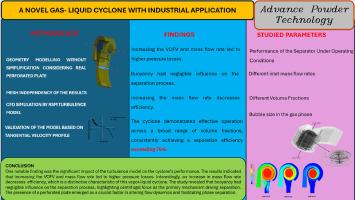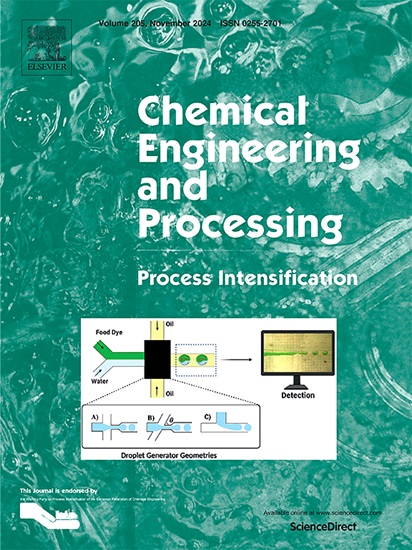新型气液分离器的工业应用性能分析
IF 3.8
3区 工程技术
Q3 ENERGY & FUELS
Chemical Engineering and Processing - Process Intensification
Pub Date : 2024-09-22
DOI:10.1016/j.cep.2024.110001
引用次数: 0
摘要
本文介绍了一种新型气液分离器,其独特的几何设计能够处理不同的体积分数和质量流量。本文全面评估了该分离器在不同气体体积分数、气泡大小和质量流量波动下的性能。研究表明,蒸汽体积分数的变化对分离效率和压力损失都有很大影响。蒸汽体积分数从 0.1 增加到 0.5 会导致分离效率降低 25%,压力损失减少 3.3 倍。相比之下,质量流量的变化对分离效率的影响相对较小。具体来说,质量流量从 15 千克/秒增加到 30 千克/秒,分离效率仅降低 4%,而压力损失却增加了 3.2 倍。此外,气泡尺寸从 1000 微米减小到 200 微米,会导致压力损失增加 33%,分离效率降低 14%。在这种设计中加入网垫可促进强制涡流的形成,从而增强分离过程。本文章由计算机程序翻译,如有差异,请以英文原文为准。

Performance analysis of a novel gas-liquid separator with industrial application
This paper presents a novel gas-liquid separator characterized by its distinctive geometric design, capable of handling different volume fractions and mass flow rates. The separator's performance is comprehensively assessed across various gas volume fractions, bubble sizes, and mass flow rate fluctuations. The study reveals that variations in vapor volume fraction substantially affect both separation efficiency and pressure loss. An increase in vapor volume fraction from 0.1 to 0.5 leads to a 25% reduction in separation efficiency and a 3.3-fold decrease in pressure loss. In contrast, changes in mass flow rate exert a relatively minor influence on separation efficiency. Specifically, increasing the mass flow rate from 15 to 30 kg/s results in a mere 4% decrease in separation efficiency, whereas pressure loss increases by a factor of 3.2.
Additionally, a reduction in bubble size from 1000 µm to 200 µm causes a 33% increase in pressure loss and a 14% decrease in separation efficiency. The incorporation of a meshpad in this design promotes the formation of a forced vortex, thereby enhancing the separation process.
求助全文
通过发布文献求助,成功后即可免费获取论文全文。
去求助
来源期刊
CiteScore
7.80
自引率
9.30%
发文量
408
审稿时长
49 days
期刊介绍:
Chemical Engineering and Processing: Process Intensification is intended for practicing researchers in industry and academia, working in the field of Process Engineering and related to the subject of Process Intensification.Articles published in the Journal demonstrate how novel discoveries, developments and theories in the field of Process Engineering and in particular Process Intensification may be used for analysis and design of innovative equipment and processing methods with substantially improved sustainability, efficiency and environmental performance.

 求助内容:
求助内容: 应助结果提醒方式:
应助结果提醒方式:


